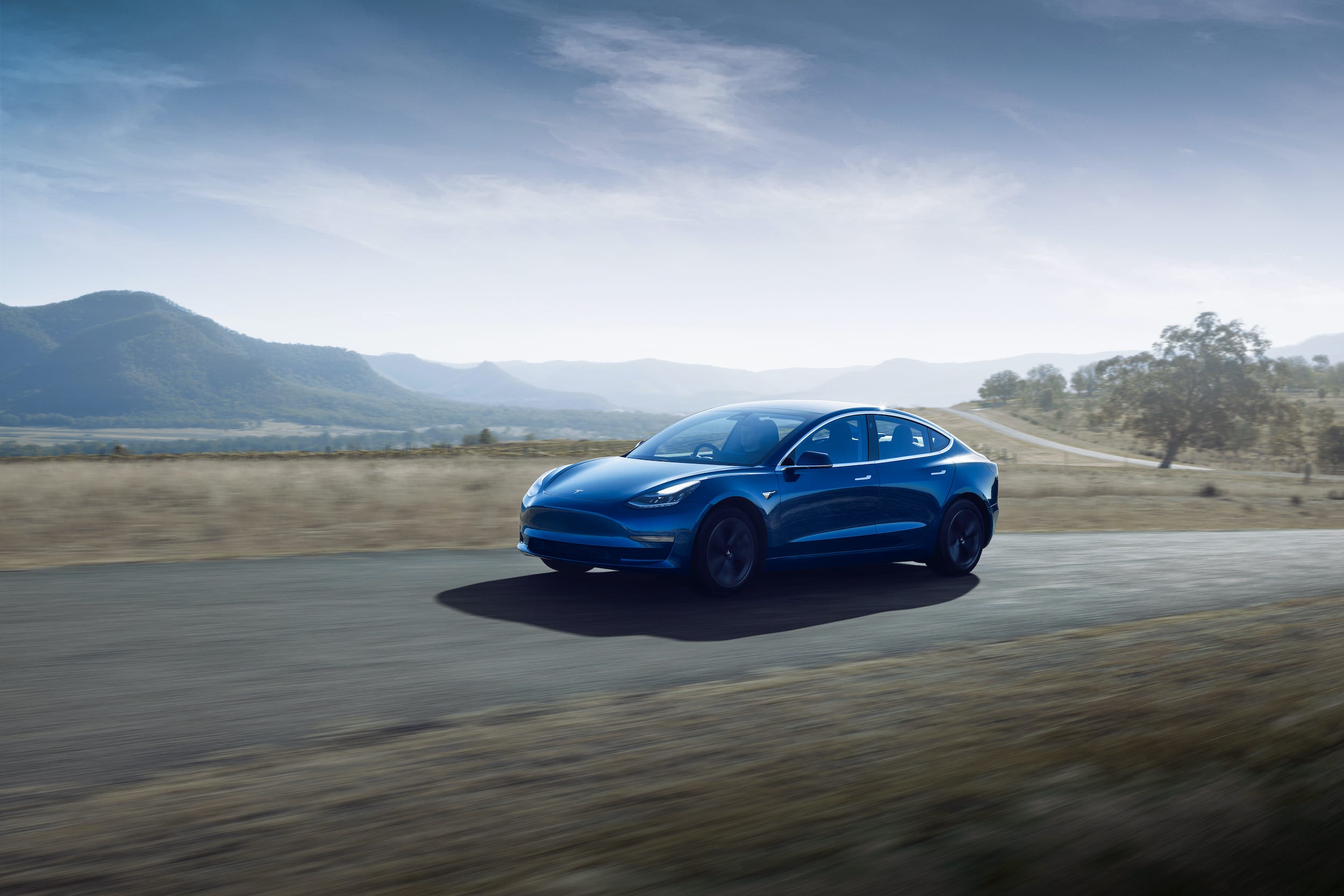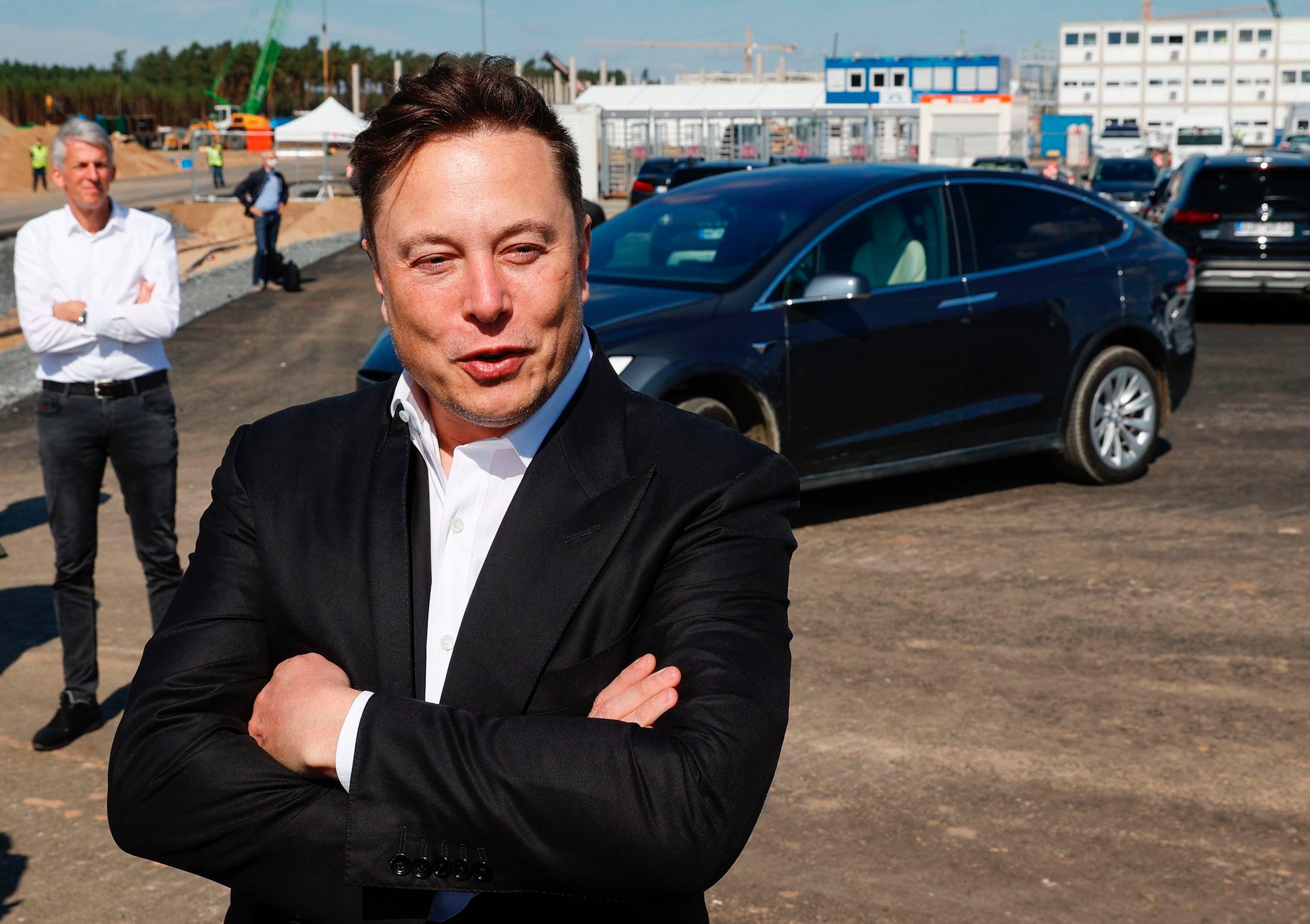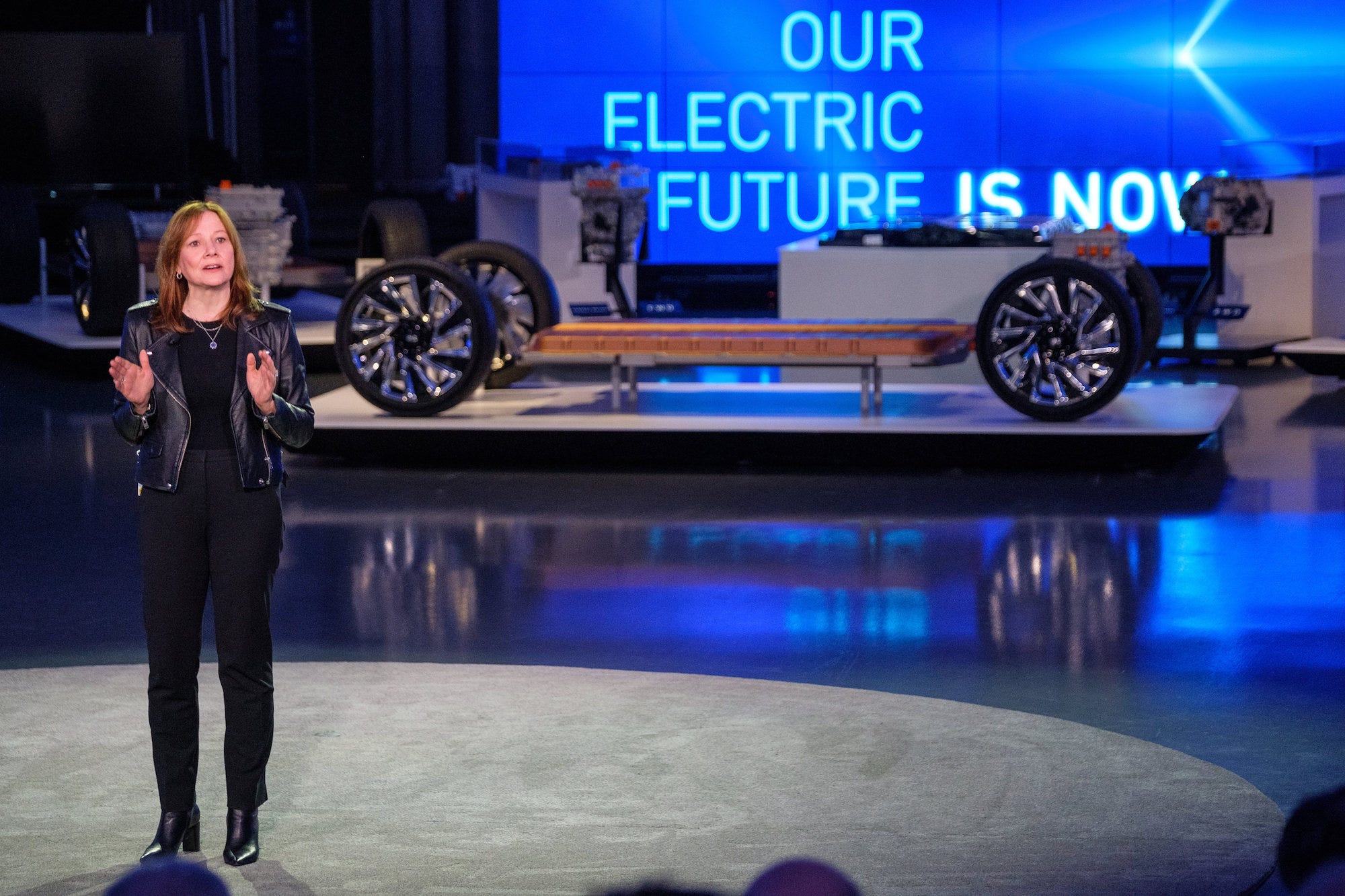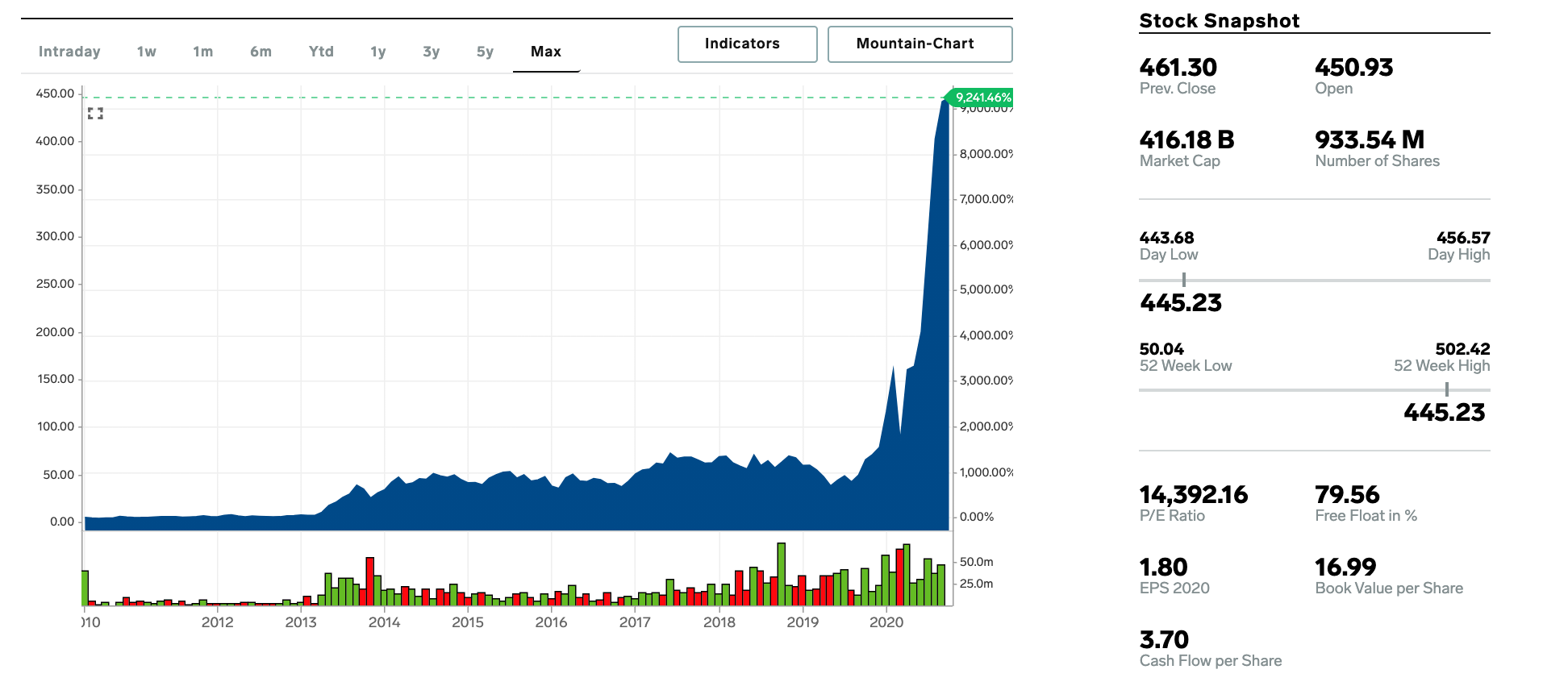
Tesla
- The green economy looks set to grow in the coming decade, as governments and businesses strive to address global warming.
- At the moment, it’s hard to have enough expertise to invest in the opportunity, given how complicated it is.
- Tesla, however, is directly involved in the green sector because it builds and sells only green technologies.
- As a result, it looks like a nice, easy way to do some green investing.
- And Tesla has a track record: investors who bought and held shares after the 2010 IPO have seen a 9,200% return.
- Visit Business Insider’s homepage for more stories.
Investing in the green economy is tricky, mainly because environmentally-responsible investments are still fairly esoteric, to people who aren’t professionals or committed to doing a lot of research.
The opportunity is set to grow over the next decade, although the rate of that development is open for debate. If Joe Biden wins the Presidential election in November and the Democrats take the Senate and hold the House, a program of global-warming-fighting legislation could be the biggest story of 2021.
Outside the US, green opportunities are also picking up. In Europe, both the giant Volkswagen Group and Mercedes-Benz parent Daimler are committing to widespread electrification of new vehicles, anticipating regulatory changes that could spell the beginning of the end for gas-burning cars and trucks.
Meanwhile, in China, most automakers expect the coming decade to bring market growth that could make the country the world’s leader in electrified transportation.
If you want to invest in this changeover, however, your best bet could be Tesla.
Tesla has a track record and has shed risk in the past year

Odd Andersen/AFP via Getty Images
First, Tesla has a track record of rewarding investors. If you'd bought shares after the company's 2010 IPO, you'd be sitting on a 9,200% return today. And that's if you'd simply used your own money. If you'd bought with leverage, even at a relatively high rate of interest, the prospective amplified return is staggering.
This all happened with Tesla minting risk at a furious clip, with the stock pitching up and down like a dinghy in a hurricane, and CEO Elon Musk's Twitter habit adding to the chaos. It also happened when Tesla was operating essentially one factory, selling one or two models at a time, struggling to validate a home-solar business, and delivering fewer than 500,000 cars a year.
Over the next couple of years, Tesla should cross that 500,000 mark, have four assembly plants online (a new US factory in Texas could join the flagship in California, as well as a plant in China and one under construction in Germany). Tesla could also be operating several battery factories by then.
The valley of mega-risk has been crossed, and because the company sells nothing but green technologies, buying shares is the obvious way to invest in a global warming solution. I'm not saying you should, mind you — just that the strategy is obvious.
Risky startups and risky traditional automakers

GM
Other electric-car startups like Rivian, Nikola, and Lucid Motors are far riskier because they haven't brought vehicles to market yet. On the other hand, their shares, if and when they go public, should be cheaper.
What about established automakers with electric ambitions?
Investment professionals have been arguing for years that General Motors, now aiming to produce 22 new electrified vehicles by 2023, is horribly undervalued. But the play there is perhaps to buy GM stock with the hope that the company decides to spin off its electric business, something Wall Street has agitated for but that GM's management has been avoiding.
Tesla was starting to look pretty expensive after a huge rally at the beginning of the year took shares above $2,000. But a five-for-one stock split in August has brought shares back into reach.
Remember, the point here isn't that you're buying an electric automaker or a solar-panel manufacturer. You'd have to think hard about that, as carmakers are great at incinerating capital and, if you survey the sector, it's tough to find anything that's outperformed the markets (save Ferrari). Solar has a history of countries such as China flooding the market with cheap panels and turning the business into a low-margin commodity-like affair.
The point is that you want to invest in the emergence of a future green economy, and you want to do it without having to sort through green bond funds or socially-responsible ETFs or delving into the complexities of carbon-credit trading.
Investing in one company and one stock rather than in an entire sector

Markets Insider
Tesla offers a straightforward way to do this, with enough risk still embedded in the business to make a substantial return a possibility while not weighing down the opportunity with so much risk that you'd be tempted to bail out if the stock takes a nosedive at some point in the next five years.
On the other hand, putting all your eggs in one basket carries its own risk. You clearly aren't hedging by investing in the entire sector, taking advantage of broad ingenuity and discounted prices for companies that haven't really broken cover yet.
I should point out that I've never owned a single share of Tesla. And to be honest, I'd doubt I'd buy shares of Tesla if journalistic best practices didn't bar me from doings so. I think there are better companies to invest in outside the transportation industry that have more solid revenue and profitability prospects and that aren't attractive due to big swings in their stock prices.
However, if you think the future could be greener than the past or present, and you want to wager a few bucks on your hunch, Tesla appears to be one of the best ways to invest in a single company that's representative of the developing green economy.

